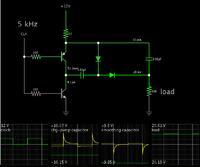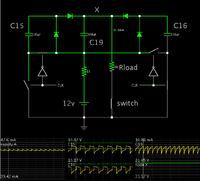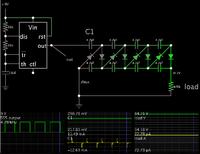Mira7
Newbie level 4
I am designing a series/parallel charge pump, which is a kind of DC-DC-converter. However it does not operate as I intended. Can you spot an error in the design?
Circuit: View attachment Charge pump.pdf
Circuit: View attachment Charge pump.pdf


